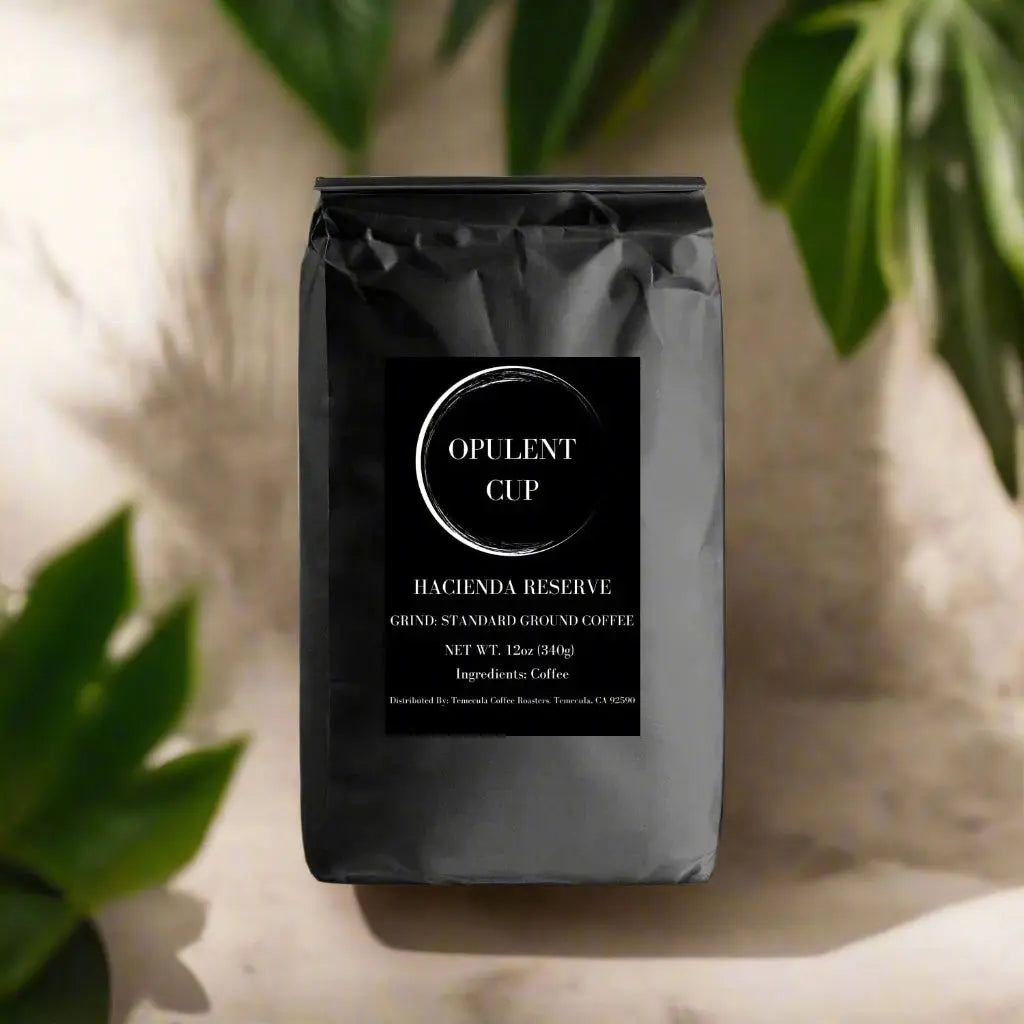Overview
Explore the captivating journey of gourmet coffee from bean to cup, including its rich origins, cultivation processes, and flavor profiles. Discover how to brew the perfect cup with various methods and recipes, while embracing sustainability and ethical sourcing in coffee production. Indulge in the diverse world of gourmet coffee and enhance your experience with delightful pairings and cocktails.
In the world of gourmet coffee, the journey from bean to cup unfolds a captivating tale that encompasses history, culture, and craftsmanship. Each sip of coffee, especially when brewed from high-quality beans like Hacienda Reserve Colombian Coffee, beckons us to explore its rich origins. This article will take you on an enlightening journey through the world of gourmet coffee beans, providing insights into their origins, the cultivation process, and delightful gourmet coffee recipes to enhance your coffee experience.
The Journey Begins: Understanding Coffee Origins
Coffee's journey begins in the lush mountains of tropical regions, where the ideal climate, altitude, and soil come together to create the perfect environment for coffee cultivation. Countries located on the “Coffee Belt” are renowned for their high-quality beans. Each varietal offers unique flavor profiles that reflect the geographic terroir, making every cup a unique experience.
The Coffee Belt and Its Rich Diversity
The Coffee Belt spans across Africa, Asia, Central, and South America. Here, we find regions known for producing some of the most sought-after coffee beans. Let us delve into some renowned coffee-producing countries:
- Ethiopia: Often considered the birthplace of coffee, Ethiopian beans are known for their floral and fruity notes.
- Colombia: Colombian coffee, especially Hacienda Reserve Colombian Coffee, is celebrated for its balanced flavor and mild acidity.
- Brazil: Known for producing substantial quantities of coffee, Brazilian beans typically have chocolate and nutty undertones.
- Costa Rica: With strict regulations to ensure high quality, Costa Rican coffees are prized for their bright acidity and full-bodied flavor.
The Art of Coffee Cultivation
Cultivating gourmet coffee beans is an intricate process that requires expertise, dedication, and a profound understanding of the environment. The following stages are crucial in ensuring high-quality coffee production:
Planting and Growing
High-quality coffee beans begin with the right seeds, often carefully selected from the best varietals. The beans are planted in nutrient-rich soil at high altitudes, which optimizes their growth. Farmers pay close attention to factors such as moisture, sunlight, and temperature fluctuations, as these can greatly influence the beans' flavor.
Harvesting
Once the coffee cherries ripen, they are harvested—either by hand or machine. Handpicking is preferred for high-quality beans, as it allows workers to choose only the ripest cherries. This careful selection is fundamental in maintaining the integrity and flavor of the coffee.
Processing the Beans
Post-harvest, the cherries undergo processing to extract the beans. There are two primary methods:
- Wet Method: Cherries are pulped, fermented, and washed to separate the bean from the fruit, enhancing their brightness and flavor.
- Dry Method: Cherries are spread out in the sun to dry, imparting more fruity characteristics to the beans.
Drying and Milling
Once processed, the beans are dried to a specific moisture content, which is critical for storage and flavor preservation. Following drying, the beans are hulled, graded, and sorted based on size and quality.
Understanding Flavor Profiles
Exploring the flavor profiles of gourmet coffee beans can transform one’s coffee-drinking experience. Factors such as origin, processing method, and roast level significantly impact the flavor. Here are some key flavor notes to consider:
- Fruity: Often found in Ethiopian and African coffees, with berry, citrus, and stone fruit flavors.
- Nutty: Commonly associated with beans from Brazil and Central America, featuring almonds, hazelnuts, and more.
- Chocolatey: Signature notes in beans from Colombia and Brazil, evoking the deep richness of cacao.
- Floral: Typically owed to Ethiopian and some Asian beans, bringing a delicate aroma and flavor.
Crafting Your Gourmet Experience
Understanding how to brew and enjoy gourmet coffee elevates the entire experience. Incorporating various methods and gourmet coffee recipes can further enhance your enjoyment. Below are some delightful coffee recipes to explore:
The Classic Pour Over
For those who appreciate a clean and rich cup, the pour-over method allows for complete control over brewing variables. Here’s how to perfect the pour-over:
- Begin with freshly ground coffee beans. A medium grind is ideal for a balanced extraction.
- Heat water to approximately 200°F (93°C).
- Using a gooseneck kettle, pour a small amount of water over the coffee grounds to bloom, allowing the flavors to open up.
- Gradually pour the rest of the water in a circular motion, ensuring even saturation of the grounds.
- Allow the coffee to drip completely, savoring the aromatic brew you’ve created.
Iced Gourmet Coffee
For those hot summer days, iced coffee can be an invigorating treat. Try this simple recipe:
- Prepare a strong brew using your favorite gourmet coffee beans.
- Once cooled, pour the coffee over a glass filled with ice cubes.
- Add a splash of milk, cream, or a dairy alternative to enhance creaminess.
- Sweeten to taste, and consider adding flavored syrups for an extra twist!
Gourmet Coffee Cocktails
Elevate your coffee experience with gourmet coffee cocktails. Combine rich coffee flavors with spirits for a delightful concoction:
- Espresso Martini: A blend of espresso, vodka, and coffee liqueur served chilled.
- Irish Coffee: Hot coffee mixed with Irish whiskey and topped with cream.
The Art of Pairing: Gourmet Coffee and Tea
While coffee reigns supreme, many enthusiasts enjoy experimenting with beverage pairings. Delighting in gourmet tea recipes can provide a refreshing contrast to coffee, showcasing an array of flavors and aromas:
Complementary Pairings
Choosing the right gourmet tea to complement your coffee experience can enhance the overall enjoyment of both beverages:
- Earl Grey Tea: Its bergamot flavor contrasts nicely with chocolatey coffees.
- Green Tea: The light and herbaceous notes of green tea can balance the richness of deeper coffee flavors.
Gourmet Tea Recipes to Explore
Don’t forget to try out some gourmet tea recipes to expand your beverage repertoire:
- Chai Latte: A mix of spiced tea, steamed milk, and sweetener creates a fragrant beverage.
- Matcha Latte: This vibrant green drink combines matcha powder, milk, and a touch of sweetener for a creamy delight.
Embracing Sustainability in Coffee Production
As the coffee culture continues to grow, it has become increasingly important to address the sustainability practices within the industry. Consumers today are becoming more conscious of their purchasing decisions, seeking ethically sourced gourmet coffee. Look for brands that prioritize sustainable farming practices, fair wages for farmers, and eco-friendly packaging to ensure that each cup contributes to a better future.
The Role of Certifications
Certifications such as Fair Trade, Organic, and Rainforest Alliance can guide consumers in identifying sustainable options. By choosing coffee that bears these certifications, you support practices that promote environmental preservation and fair treatment of workers in the coffee industry.
Embarking on Your Gourmet Coffee Adventure
As we conclude our exploration, let us reflect on the journey taken by gourmet coffee beans and the ways they connect us to cultures, traditions, and passionate individuals committed to their craft. From savoring a cup of Hacienda Reserve Colombian Coffee in the comfort of home to trying new gourmet coffee recipes and embracing sustainable practices, every experience adds a rich layer to the world of coffee.
Whether you are an aficionado or a newcomer, the universe of gourmet coffee invites you to indulge in its depths. Allow your palate to explore diverse flavors and brewing methods, and share your findings with others who share your passion for this beloved beverage. Happy brewing!

